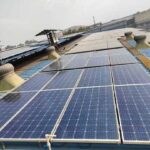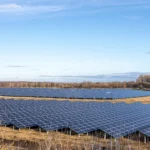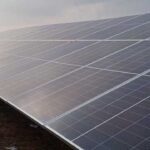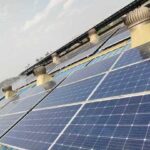Solar Power System Efficiency: How to Calculate for Residential, Industrial & Commercial Use
Solar Power System Efficiency: How to Calculate for Residential, Industrial & Commercial Use
Pre-Module Losses | Tolerance of rated power | Consider that the module does not deliver the power as stated in the data sheet. Manufacturers provide a tolerance, often up to 5%. |
Shadows | Shadows may be caused by trees, chimneys etc. Depending on the stringing of the cells, even partial shading may have a significant effect. | |
Dirt | Losses due to dirt up to 4% in temperate regions with some frequent rain. Up to 25% in arid regions with only seasonal rain and dust. | |
Snow | Dependent on location and maintenance effort. | |
Reflection | Reflection losses increase with the angle of incidence. Also, this effect is less pronounced in locations with a large proportion of diffuse light, i.e. clouds. | |
Module Losses | Conversion | The nominal efficiency is given by the manufacturer for standard conditions. |
Thermal losses | With increasing temperatures, conversion losses increase. These losses depend on irradiance (i.e. location), mounting method (glass, thermal properties of materials), and wind speeds. A very rough estimate is ~8% | |
System Losses ~ 14% | Wiring | Any cables have some resistance and therefore more losses. |
MPP | Ability of the MPP tracker in inverters to consistently find the maximum power point. | |
Inverter | Inverter efficiency | |
Mis-sized inverter | If the inverter is undersized, power is clipped for high intensity light. If it is oversized, the inverter’s efficiency will be too low for low intensity light. | |
Transformer | Transformer losses, in case where electricity has to be connected to a high-voltage grid( 11 KV and above ). | |
Operation & Maintenance | Downtime | Downtime for maintenance is usually very low for photovoltaic systems. |
Suggested Articles

How to Calculate Savings from Rooftop Solar Solutions: A Complete Guide
Calculating savings from rooftop solar solutions is essential for planning your investment. This guide explains how to estimate cost reduction, return on investment, and long-term financial benefits for residential, commercial, and industrial solar projects.

100 kW Solar Plant Cost in Rajasthan: Latest Cost, Maintenance & Payback Time
Installing a 100 kW solar plant in Rajasthan costs around ₹40–60 lakh in, with annual savings up to ₹10–12 lakh. Discover maintenance needs, ROI, and payback period of 4–6 years.

Solar String Sizing Check: Did Your Installer Get It Right?
Worried your rooftop solar strings might be sized incorrectly? Check these tips to ensure your Solar PV system is installed for maximum efficiency and safety

Agrivoltaics: Merging Solar Power with Farming
Discover how solar batteries store excess energy, maximize your solar system’s efficiency, and provide reliable power during outages. Learn about the types, benefits, lifespan, and maintenance tips to make the most of your solar investment.

Law Change Makes It Hard to Receive Compensation for Solar Developers
A recent law change creates hurdles for solar developers seeking compensation, impacting project viability.

Haryana Electricity Tariff Hike Impacts All Consumer Categories in 2015-16
Haryana electricity tariffs were increased across all consumer categories in 2015-16, raising power costs for households, industries, and businesses statewide.

Sir! Solar Mein Itna Chalta Hai!” When to Reject a Site: The Truth About Shadow Analysis
Discover the importance of solar site assessment and shadow analysis to optimize rooftop solar performance, prevent shading losses, and maximize energy generation.

How DISCOMs Implement Net Metering for Solar Power Plants
Discover the process of net metering implementation by DISCOMs for solar power plants. Understand the benefits, billing mechanism, and how it maximizes solar energy utilization.